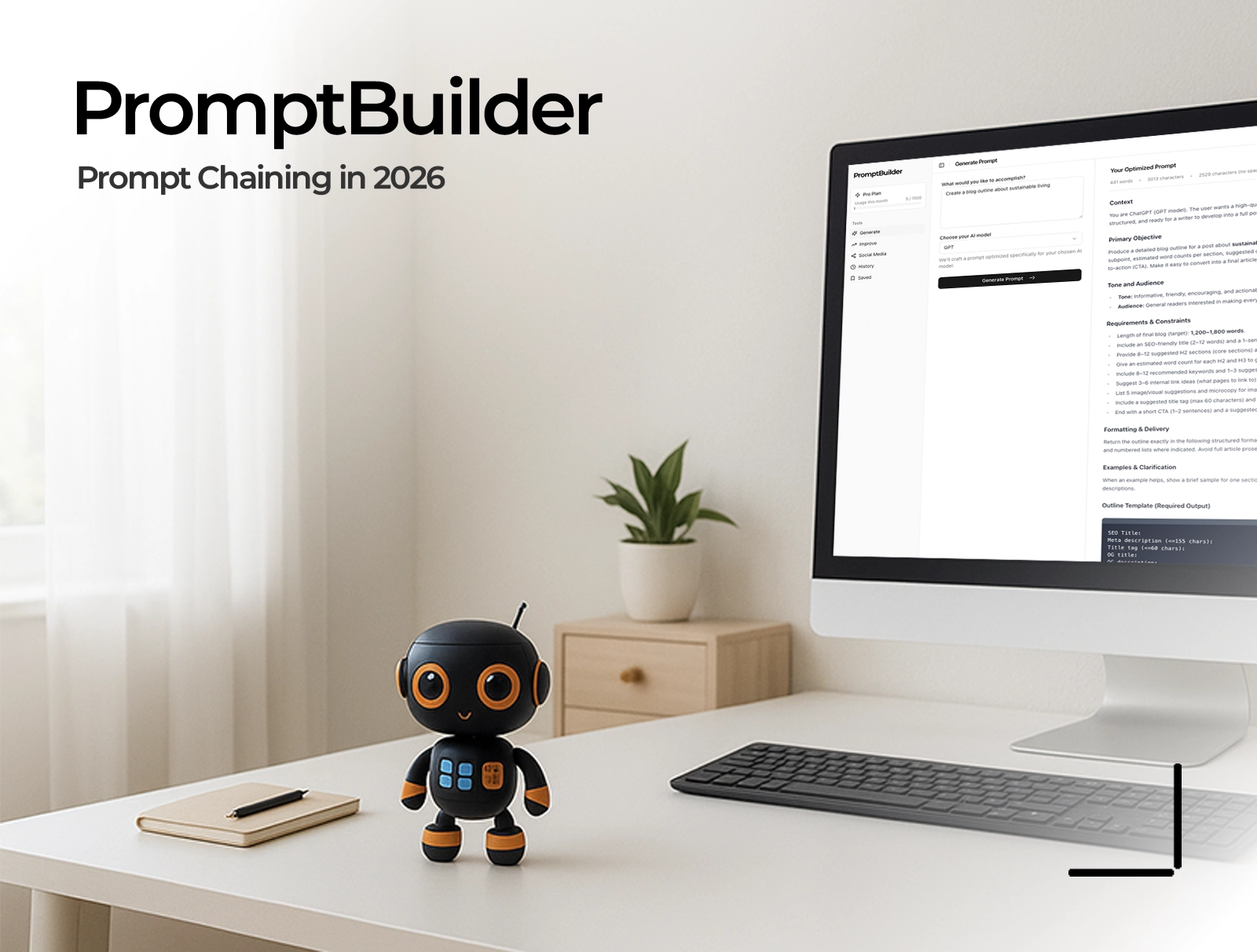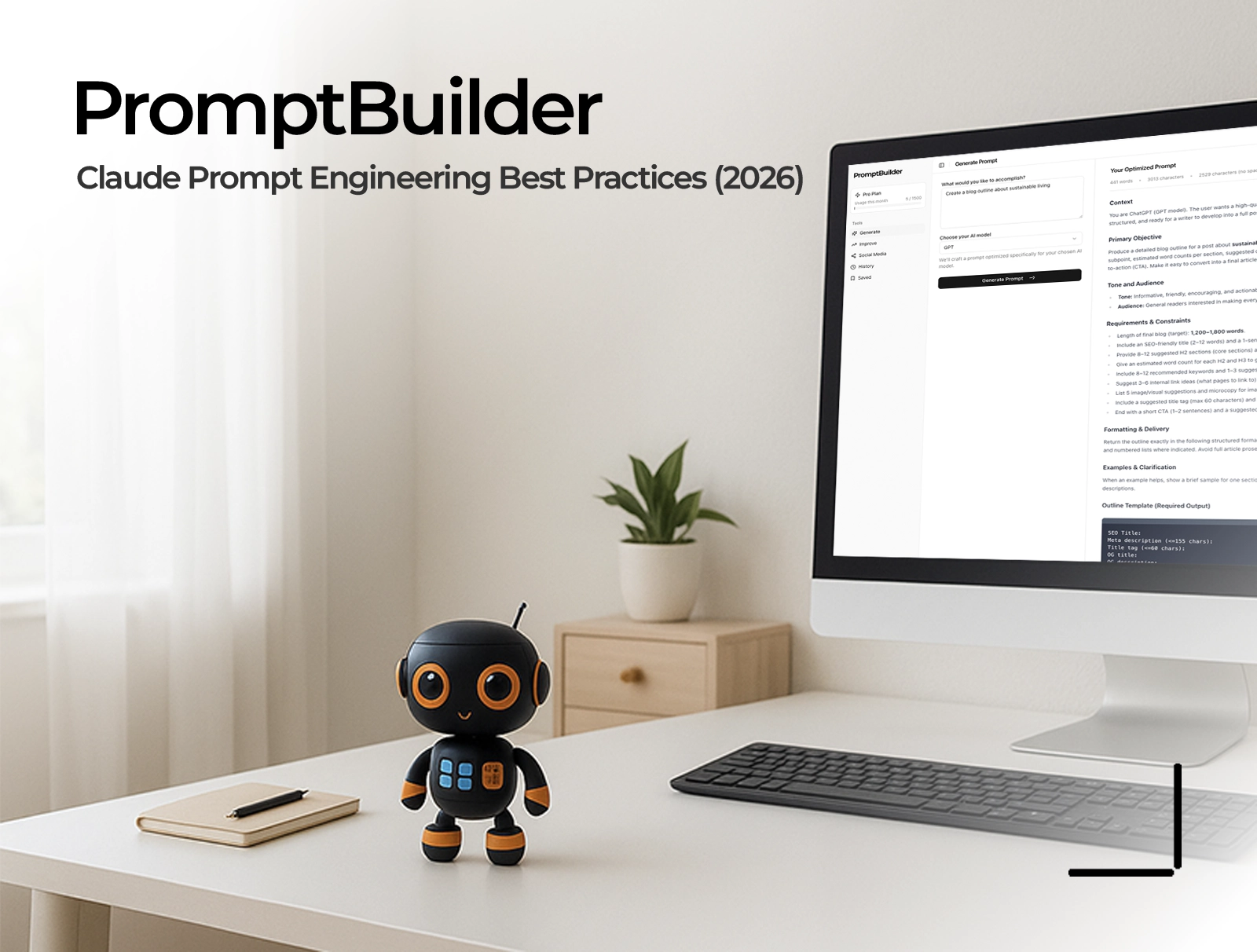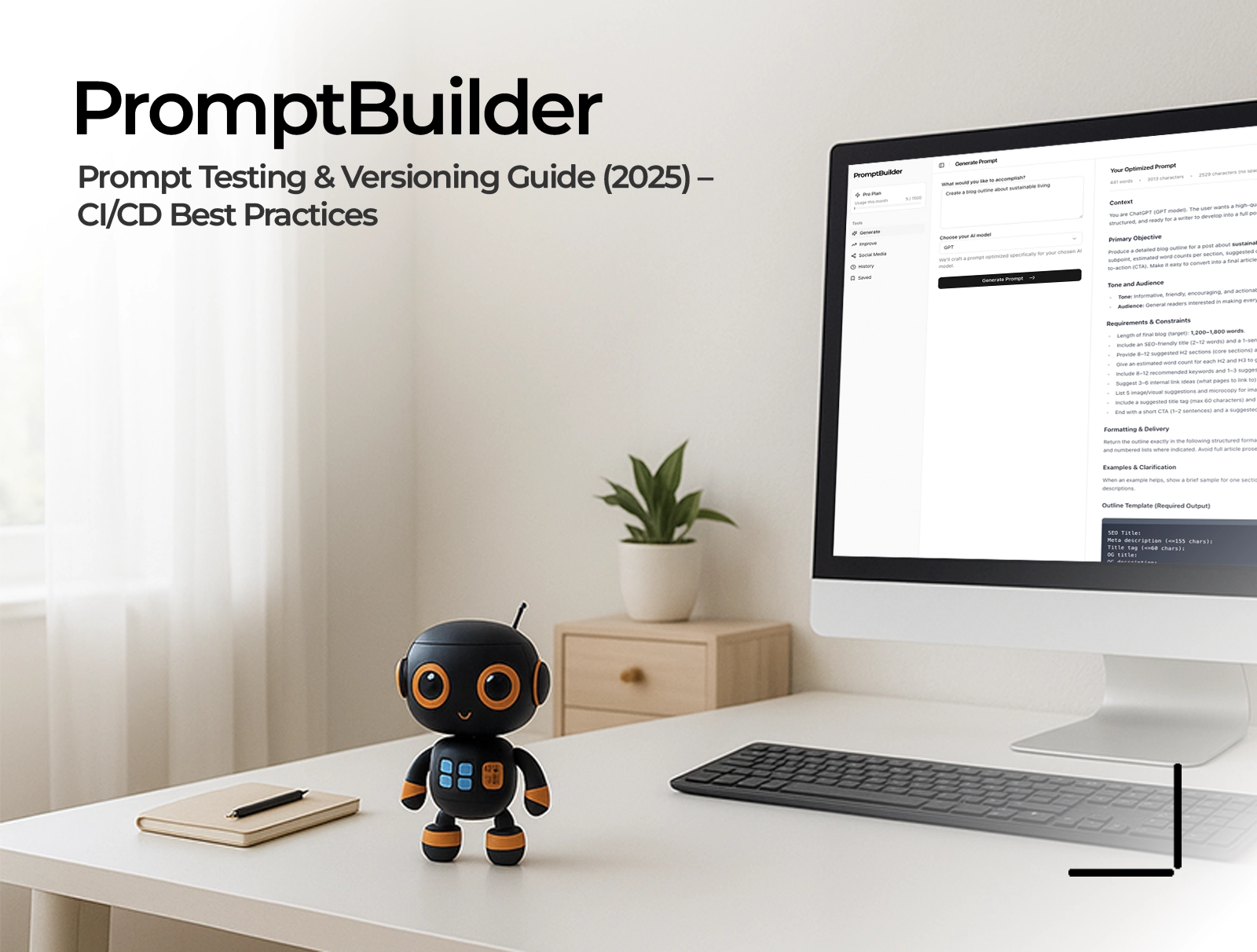PromptBuilder Team
August 7, 2025
2 min read
Advanced Prompting Techniques for 2025
This guide covers practical patterns beyond the basics and shows how to evaluate them.
ReAct (Reason + Act)
Interleave reasoning traces with actions on tools.
You are a reasoning agent. Think step‑by‑step. When a tool is needed, emit an action.
Tools available: [search, calculator].
Return a final answer with references.
Toolformer‑style Hints
Explicitly suggest when to call which tool.
Before answering, decide if external knowledge is required. If yes, call `search(query)`.
Summarize sources and proceed with reasoning.
Self‑Consistency
Produce 5 diverse solutions. Then synthesize a final answer choosing the most consistent reasoning path.
Chain‑of‑Verification (CoVe)
Provide answer A.
Then verify A by checking assumptions, edge cases, and references. Return A' if corrections are needed.
Evaluation Tips
- Define success metrics (accuracy, time, tokens)
- Use small test sets; track win rates vs. baseline
- Prefer automated checks for factual tasks
FAQ
Which advanced pattern improves reliability most in 2025? CoVe + Self‑Consistency on factual tasks; ReAct when tools are available.
Do these add cost? Yes - mitigate via smaller n, caching, and early stopping.
See also: Best Prompt Frameworks in 2025 and the pillar Prompt Engineering in 2025.


